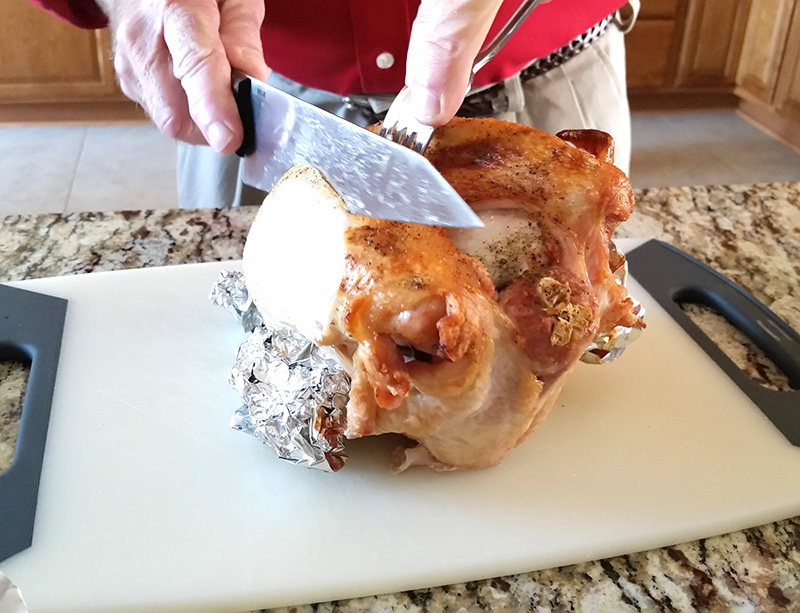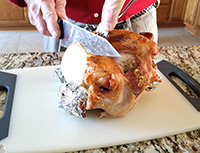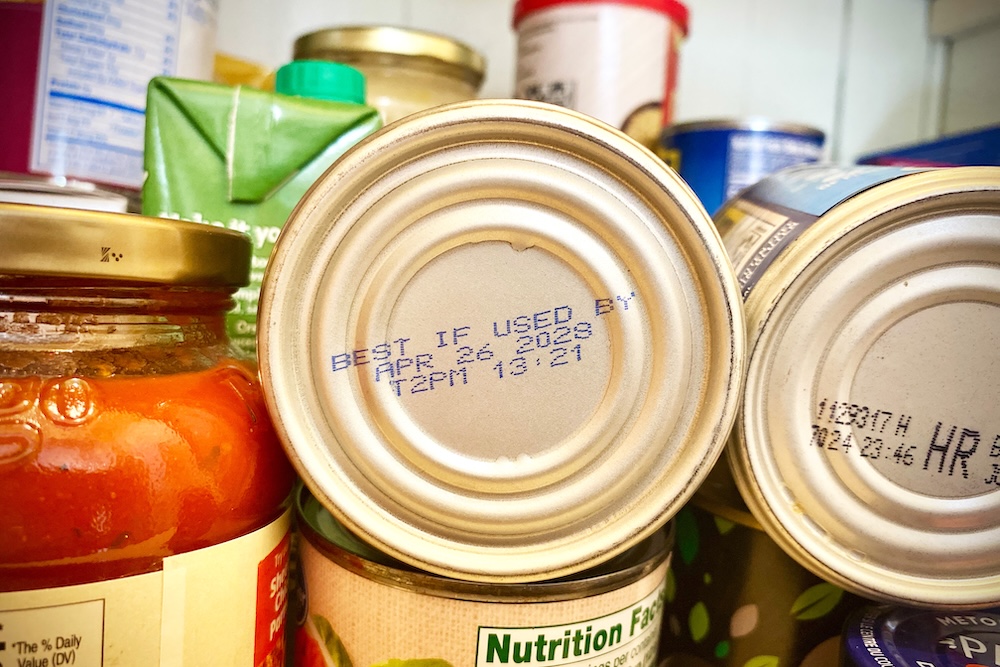Whole roasted turkey is the centerpiece for many holiday meals and gatherings. There are a variety of ways to prepare and present it, but food safety is always the most important part of any turkey recipe.
Harmful bacteria grow rapidly between the temperatures of 40 and 140 degrees Fahrenheit. Avoiding time-temperature abuse needs to be key in your meal preparation.
When you remove the turkey from the refrigerator, it should be trimmed, seasoned and cooked without delay. Leaving it out at room temperature or anywhere in the temperature “danger zone” for too long could make it unsafe, even after it is cooked.
While preparing your turkey, and while thawing it as described below, be careful to prevent cross-contamination. The harmful bacteria on raw turkey can contaminate hands, countertops, cutting boards, dishes and utensils that come in contact with other foods during meal prep and make those foods unsafe.
There are three ways to safely thaw a frozen turkey: in the refrigerator, in cold water and in the microwave. The best and safest way is in the refrigerator where the turkey will not reach an internal temperature above 40 F and harmful bacteria will not grow. Thawing a turkey in the refrigerator requires planning. If the refrigerator temperature is set at 40 F, it will take about 24 hours for every 5 pounds of turkey to thaw.
A frozen turkey can also be thawed in cold water. Make sure the turkey is wrapped well in leak-proof packaging, as the flesh can absorb water. Submerge the turkey in cold tap water in a clean container. Change the water every 30 minutes until the turkey is completely thawed. It should take about 30 minutes per pound of turkey to thaw. Since temperature conditions are not controlled using this method, the turkey should be cooked immediately after thawing.
The third method of thawing is in the microwave, which may only work well for small turkeys or turkey parts. Follow the microwave manufacturer’s instructions for thawing a turkey. Always cook the turkey immediately after thawing in the microwave, as some parts of the turkey may have reached temperatures where harmful bacteria can grow.
To roast a turkey, set the oven at a temperature of 325 F or higher. Place the turkey on a rack in a roasting pan in the center of the oven. Whole poultry is safe when all parts are cooked to a minimum internal temperature of 165 F as measured with a food thermometer. A thermometer is the only sure way to know the turkey is safely cooked. Check the internal temperature in the innermost part of the thigh and wing and the thickest part of the breast. It’s best to check more than one place in each location. It is still best to cook a turkey to higher temperatures, such as 170 to 180 F, to remove pink appearance and rubbery texture.
Even if the turkey comes equipped with a “pop-up” temperature indicator, it is important to use a food thermometer as described here to ensure its safety.
For food safety reasons, cook stuffing or dressing separately and not inside the turkey. The stuffing needs to reach an internal temperature of 165 F in order to be safe. When the stuffing is inside of the turkey it takes much longer for it to reach a safe temperature. Often, by the time the stuffing reaches 165 F, the turkey has overcooked and may be dry. By cooking the stuffing and the turkey separately you can better control the temperature of each.
If you do stuff the turkey, do so just before cooking. Make sure the stuffing is moist and placed loosely in the turkey. Take the internal temperature of the stuffing during cooking using a calibrated food thermometer. Check several places to know all spots are at the minimum temperature of 165 F. Keep in mind that a stuffed turkey takes longer to cook than one that hasn’t been stuffed.
After taking the turkey out of the oven, let it stand 20 minutes before carving for best quality. Move the turkey to a clean serving platter so it is not contaminated with bacteria from dirty food preparation surfaces, utensils or your hands. Now you can be proud not only of the flavorful entrée you have created, but also in knowing the food was handled safely.








